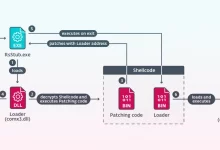Among the diverse array of Android malware available on the dark web markets, Rafel RAT stands out as a particularly potent tool for malicious actors. Rafel RAT, an open-source remote administration tool, enables remote access and control over infected Android devices. Its capabilities include surveillance, data exfiltration, persistence mechanisms, and manipulation of device functionalities.
The Relation Between APT-C-35 and Rafel RAT
Recent research by Check Point has uncovered instances of APT-C-35, also known as DoNot Team, leveraging Rafel RAT in their espionage operations. This discovery highlights the tool’s versatility and effectiveness across different threat actor profiles and operational objectives. The group has been observed using Rafel RAT to conduct extensive espionage campaigns and targeting high-profile organizations, including those in the military sector.
Analysis reveals approximately 120 distinct malicious campaigns associated with Rafel RAT, some of which have successfully targeted prominent organizations globally. Victims primarily hail from the United States, China, and Indonesia, with Samsung, Xiaomi, Vivo, and Huawei being the most affected device brands. Notably, a portion of targeted devices runs on unsupported Android versions, exacerbating security vulnerabilities due to the lack of essential security patches.
Technical Insights and Modus Operandi
Rafel RAT employs sophisticated techniques to evade detection and execute malicious operations discreetly. Upon infiltration, the malware initiates communication with a command-and-control (C&C) server, facilitating remote data exfiltration, surveillance, and device manipulation. Its command set includes capabilities for accessing phone books, SMS messages, call logs, location tracking, and even initiating ransomware operations.
Threat actors utilizing Rafel RAT operate through a PHP-based C&C panel, leveraging JSON files for data storage. This streamlined infrastructure enables attackers to monitor infected devices comprehensively, accessing crucial information such as device models, Android versions, geographical locations, and network operator details. Such insights empower threat actors to tailor their malicious activities and campaigns effectively.
Emerging Threats and Mitigation Strategies
As Rafel RAT continues to evolve and proliferate, robust cybersecurity measures become imperative for Android users and enterprises alike. Effective strategies to mitigate risks include deploying comprehensive endpoint protection, staying updated with security patches, educating users about phishing and malware threats, and fostering collaboration across cybersecurity stakeholders.
Rafel RAT exemplifies the nature of Android malware, characterized by its open-source nature, extensive feature set, and widespread adoption in illicit activities. Vigilance and proactive security measures are essential to safeguard against its threats, ensuring continued protection of user privacy, data integrity, and organizational security in an increasingly interconnected digital world.





